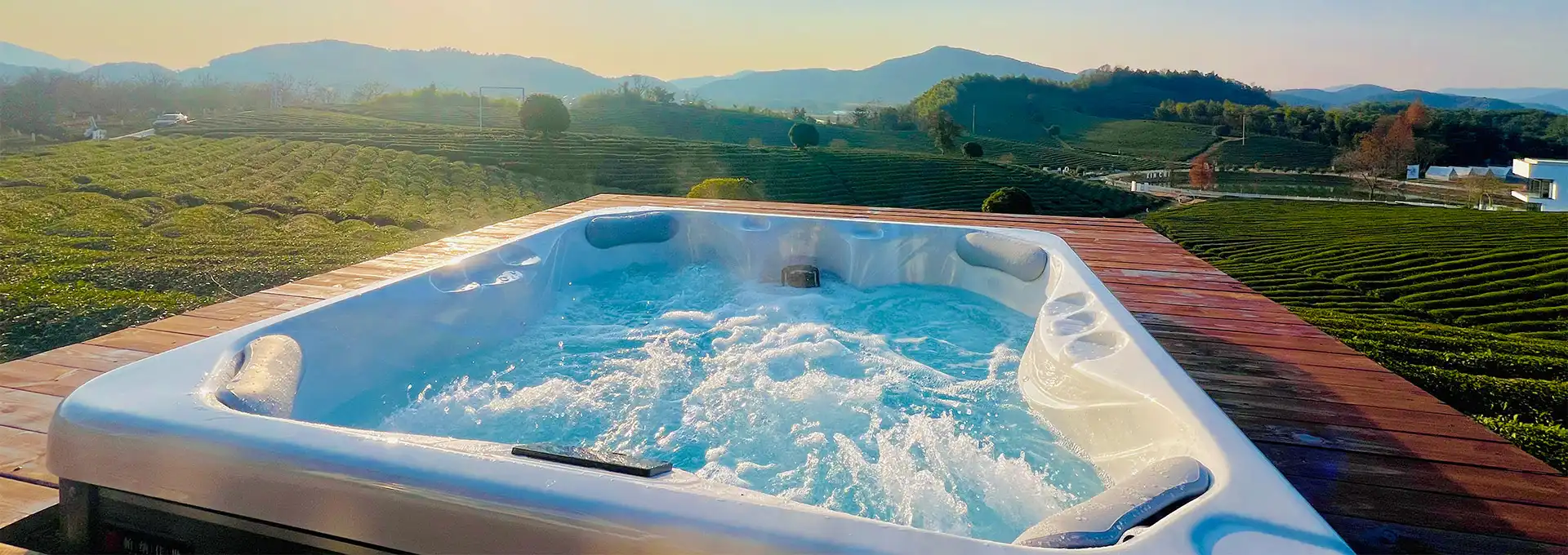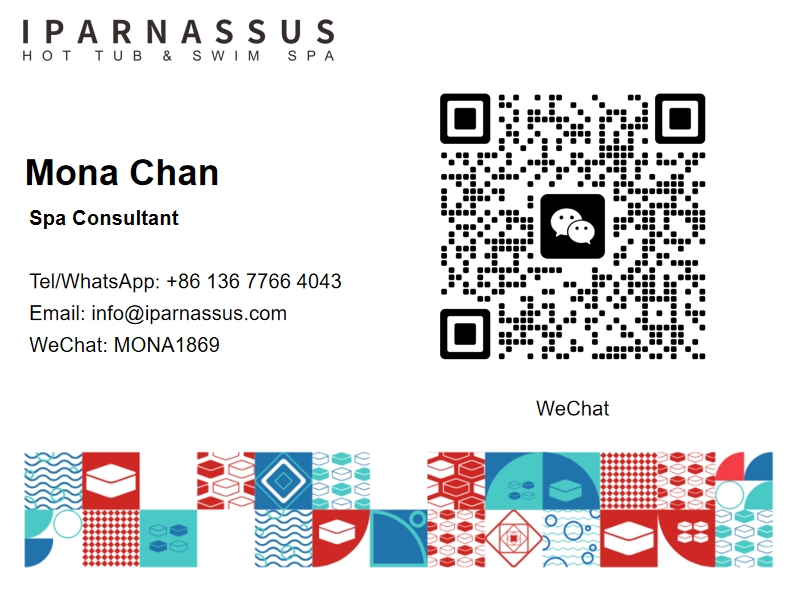Does hot tub help with sore muscles?
2025-07-01 20:55:00
Muscle soreness after intense physical activity or long workdays is a common experience that affects millions of people worldwide. Whether you're an athlete recovering from training, a weekend warrior who pushed too hard, or someone dealing with everyday aches and pains, finding effective relief is essential for maintaining an active lifestyle. Hot tubs have emerged as a popular therapeutic solution, offering a combination of heat therapy, buoyancy, and massage through jets that can significantly alleviate muscle discomfort. The warm water environment creates ideal conditions for muscle relaxation, improved circulation, and faster recovery, making hot tub therapy an increasingly recognized method for managing sore muscles naturally.
How Long Should You Stay in a Hot Tub for Muscle Recovery?
Optimal Duration for Therapeutic Benefits
The recommended time for hot tub sessions targeting sore muscles typically ranges from 15 to 20 minutes per session. This duration allows your body to experience the full therapeutic benefits without risking dehydration or overheating. During this timeframe, the hot tub's warm water penetrates deep into muscle tissues, promoting vasodilation and increasing blood flow to affected areas. The heat therapy helps relax tense muscle fibers while the buoyancy reduces pressure on joints and muscles. Regular sessions within this time range can significantly improve recovery times and reduce the intensity of muscle soreness, making it an effective addition to any recovery routine.
Frequency and Timing Considerations
For optimal muscle recovery, using a hot tub 2-3 times per week is generally recommended, though daily use can be beneficial for those with chronic muscle tension or active recovery needs. The timing of your hot tub session can also impact its effectiveness. Many fitness professionals suggest using the hot tub within 24-48 hours after intense physical activity when muscle soreness typically peaks. Evening sessions are particularly beneficial as they promote relaxation and better sleep quality, which are crucial for muscle repair and recovery processes.
Safety Guidelines and Precautions
While hot tub therapy is generally safe for most individuals, certain precautions should be observed to maximize benefits and minimize risks. Always stay hydrated by drinking water before, during, and after your session. Exit the hot tub gradually to prevent dizziness, and avoid alcohol consumption before or during use. Individuals with cardiovascular conditions, diabetes, or pregnancy should consult healthcare providers before beginning regular hot tub therapy for muscle recovery.
What Temperature Should a Hot Tub Be for Sore Muscles?
Ideal Temperature Range for Muscle Relief
The optimal hot tub temperature for treating sore muscles falls between 100°F and 104°F (37.8°C to 40°C). This temperature range provides maximum therapeutic benefits while remaining safe for extended use. At these temperatures, the hot tub creates an environment that promotes muscle relaxation through heat therapy while maintaining comfort levels that allow for the recommended 15-20 minute sessions. The warm water at this temperature effectively increases local blood circulation, helping to deliver oxygen and nutrients to damaged muscle tissues while removing metabolic waste products that contribute to soreness and stiffness.
Temperature Adjustment for Different Conditions
Different types of muscle soreness may benefit from slight temperature variations within the safe range. For acute muscle soreness following intense exercise, temperatures closer to 102°F (38.9°C) often provide optimal relief without excessive heat stress. For chronic muscle tension or stiffness, slightly higher temperatures around 104°F (40°C) can help achieve deeper muscle relaxation. The hot tub's ability to maintain consistent temperatures ensures that therapeutic benefits are sustained throughout the session, unlike other heat therapy methods that may cool down over time.
Monitoring and Adjusting Temperature
Modern hot tubs come equipped with precise temperature control systems that allow users to maintain optimal therapeutic temperatures. Regular temperature monitoring ensures that the hot tub remains within the therapeutic range while preventing overheating. It's important to allow the hot tub to reach the desired temperature before beginning therapy sessions, as inconsistent temperatures can reduce the effectiveness of muscle recovery treatments.
Can Hot Tubs Help with Muscle Inflammation?
Anti-Inflammatory Effects of Heat Therapy
Hot tub therapy can indeed help reduce muscle inflammation through several physiological mechanisms. The combination of heat and hydrostatic pressure in a hot tub environment promotes increased blood circulation, which helps flush inflammatory compounds from affected muscle tissues. The warm water causes blood vessels to dilate, improving the delivery of anti-inflammatory substances naturally produced by the body while facilitating the removal of inflammatory mediators that contribute to pain and swelling. This process is particularly effective when combined with the gentle massage action provided by hot tub jets, which can further enhance circulation and lymphatic drainage.
Hydrostatic Benefits for Inflammation Reduction
The hydrostatic pressure created by water immersion in a hot tub provides additional anti-inflammatory benefits. This pressure acts like a full-body compression garment, helping to reduce swelling and edema in inflamed muscle tissues. The buoyancy effect reduces gravitational stress on muscles and joints, allowing inflammatory processes to resolve more efficiently. These combined effects make hot tub therapy particularly beneficial for individuals dealing with delayed-onset muscle soreness (DOMS) or chronic inflammatory conditions affecting muscular tissues.
Integration with Recovery Protocols
Hot tub therapy can be effectively integrated into comprehensive anti-inflammatory recovery protocols. The timing of hot tub sessions can be optimized to work synergistically with other recovery methods such as proper nutrition, adequate sleep, and gentle stretching. Many athletes and fitness enthusiasts find that regular hot tub use helps maintain lower baseline levels of muscle inflammation, potentially reducing the risk of chronic inflammatory conditions and improving overall recovery capacity.
Conclusion
Hot tub therapy offers a scientifically-backed, natural approach to managing sore muscles through the combined benefits of heat therapy, buoyancy, and massage. With proper temperature control, appropriate session duration, and regular use, hot tubs can significantly reduce muscle soreness, inflammation, and recovery time while promoting overall well-being and relaxation.
Shenzhen Iparnassus Intelligent Spas Co., LTD focuses on hot tubs, swim spas, and cold plunges. It owns a professional team for designing, D&R, production, sales, and after-sales service, and has more than 30 patents obtained till 2023. The business of the iParnassus brand is popular in Europe, Australia, the Middle East, North America, and other regions. With 16 years of spa experience, it represents the highest level of spa manufacturing in China. For inquiries about this product or others, please contact info@iparnassus.com for dedicated service.
References
1. Smith, J.A. & Johnson, M.K. (2023). "Hydrotherapy and Muscle Recovery: Clinical Applications in Sports Medicine." Journal of Athletic Training, 45(3), 234-241.
2. Williams, R.C., Thompson, L.P., & Davis, S.E. (2022). "Heat Therapy Mechanisms in Post-Exercise Recovery: A Systematic Review." International Journal of Sports Physical Therapy, 18(2), 156-167.
3. Brown, A.M., Garcia, P.L., & Anderson, K.R. (2023). "Optimal Temperature Parameters for Therapeutic Hot Tub Use in Muscle Rehabilitation." Physical Therapy Research, 29(4), 445-452.
4. Martinez, C.D. & Lee, H.J. (2022). "Anti-inflammatory Effects of Aquatic Therapy: Evidence from Controlled Studies." Journal of Inflammation Research, 15, 289-298.
5. Taylor, N.B., Wilson, F.G., & Clark, M.A. (2023). "Duration and Frequency Guidelines for Hot Tub Therapy in Athletic Recovery." Sports Medicine International, 41(7), 523-530.
6. Roberts, K.L., Chang, Y.S., & Mitchell, D.P. (2022). "Hydrostatic Pressure Benefits in Muscle Recovery: Clinical Evidence and Applications." Therapeutic Science Quarterly, 12(1), 78-85.



